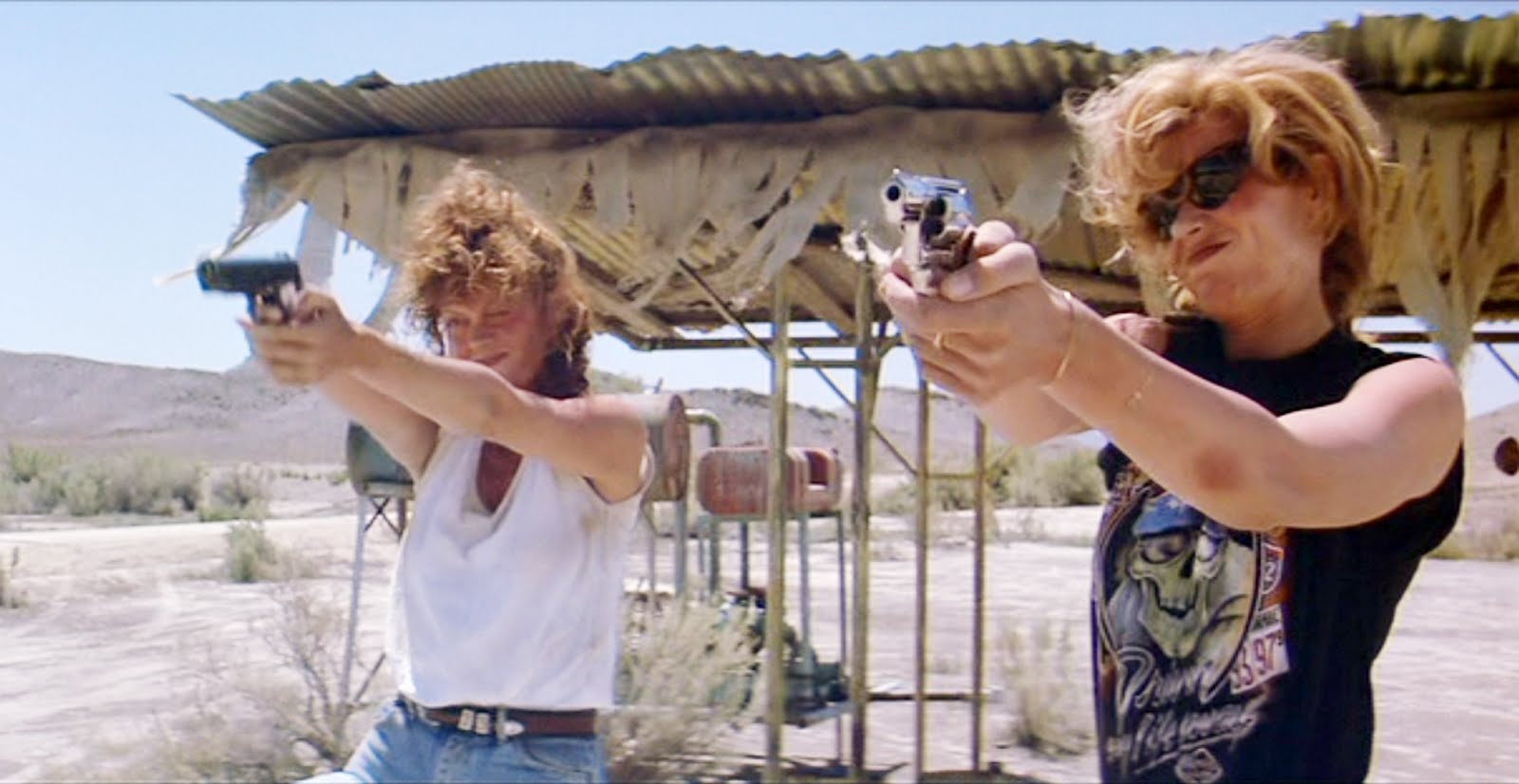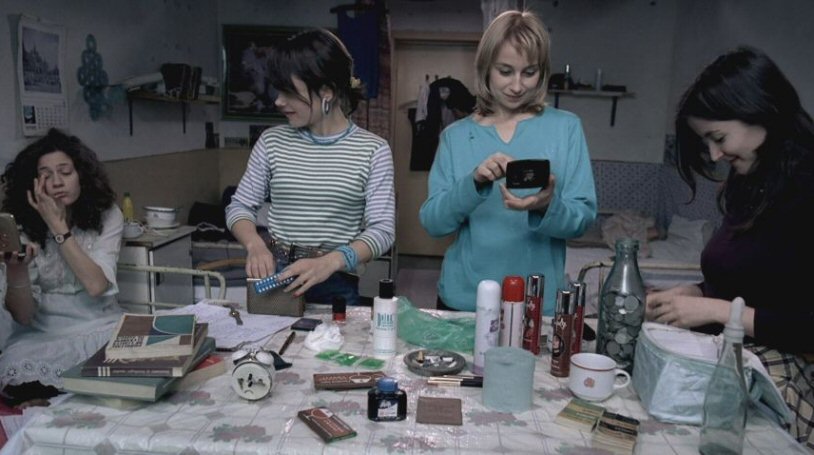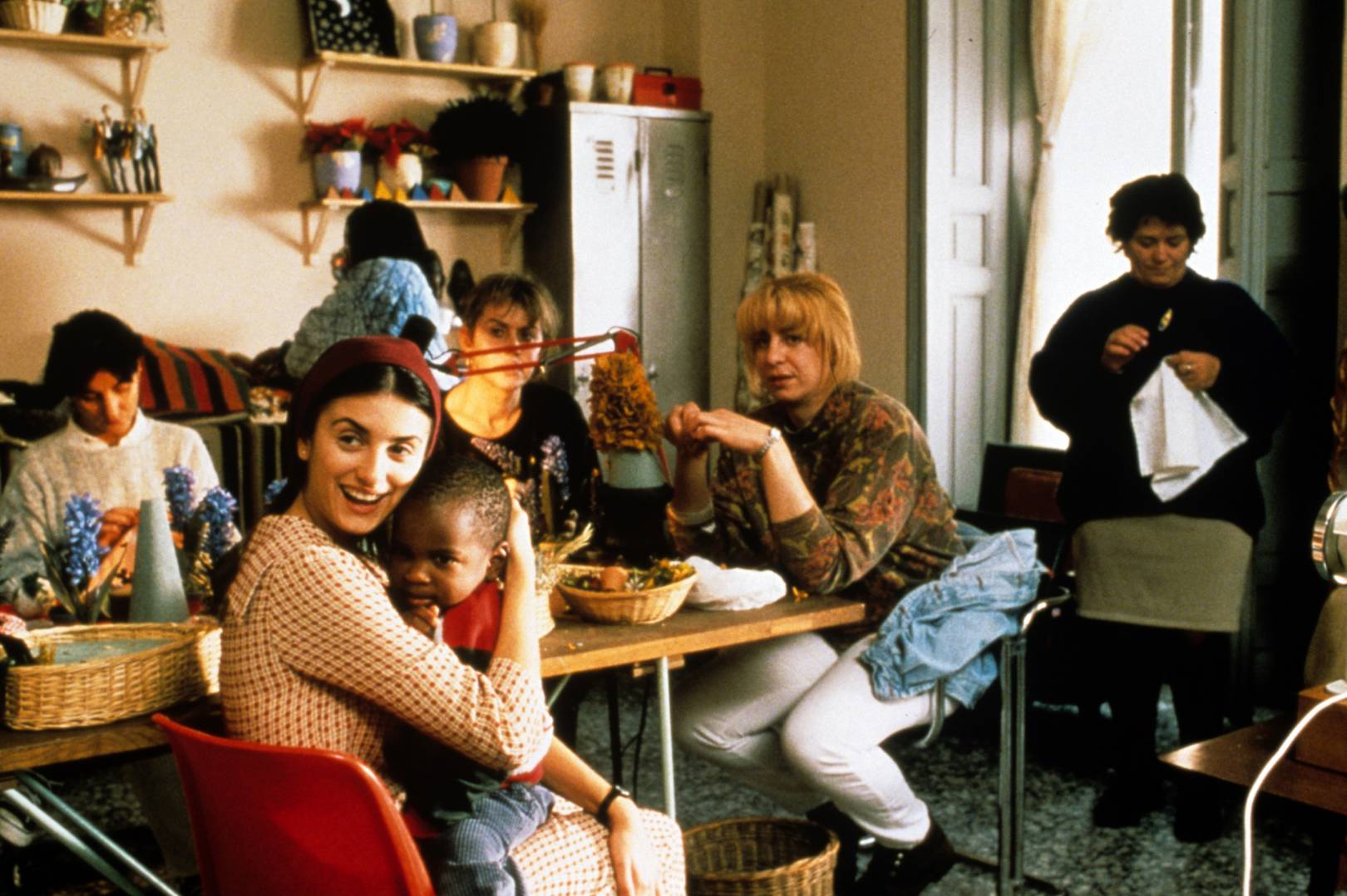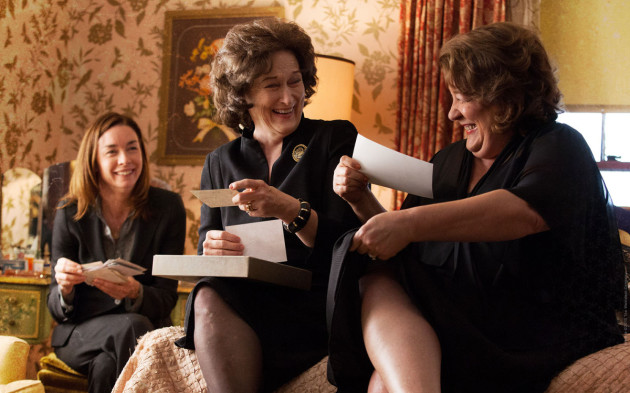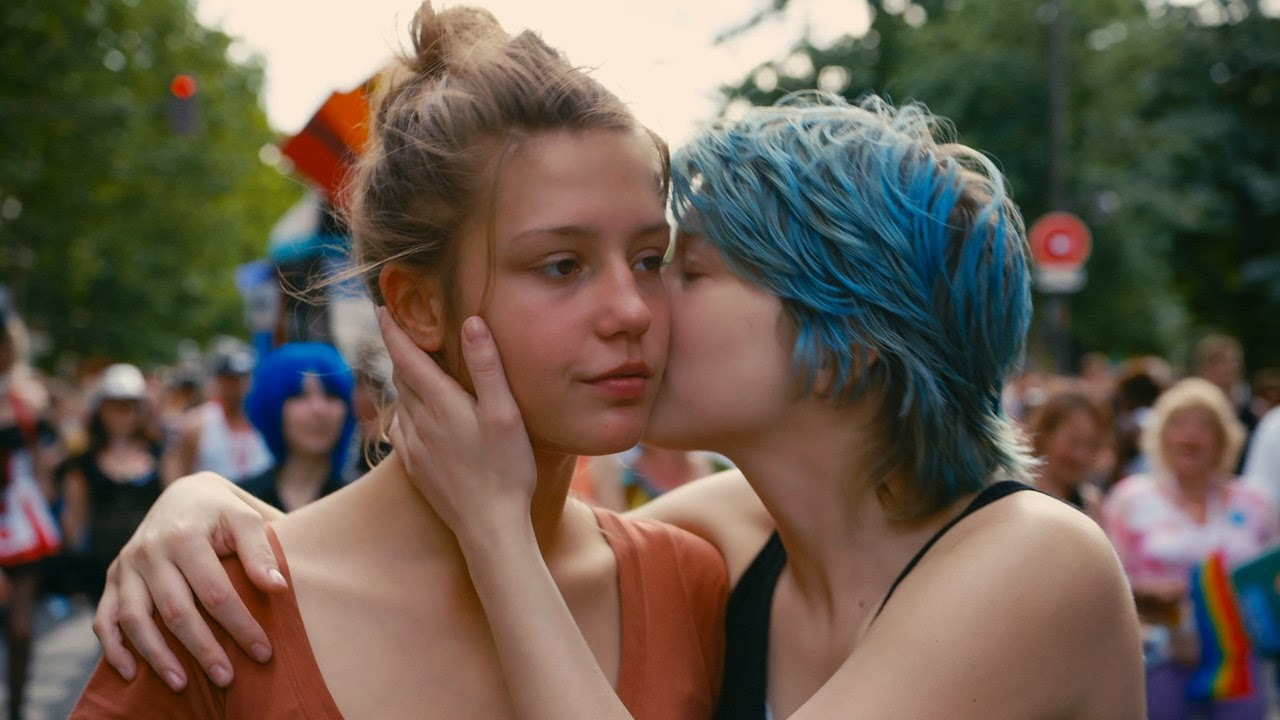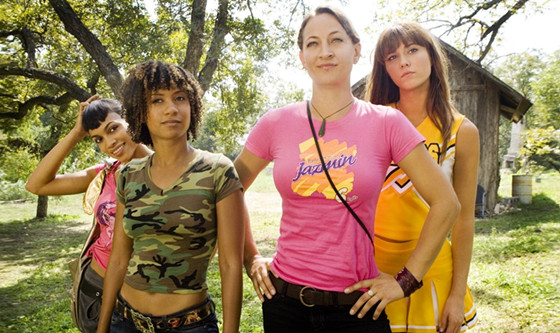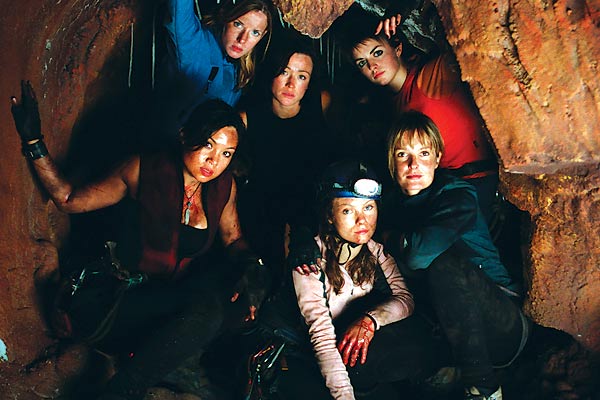First things first, the Bechdel Test rates films based on the criteria of containing at least two female characters who talk to each other about something besides a man. It’s remarkable (or unfortunately it might not be, seeing how our world works) how many films actually do not manage to pass this very simple set of rules.
For those who don’t know, the Bechdel test is named after cartoonist Alison Bechdel, who in 1985 drew a comic in which two women think about going to the movies. One of them points out she will only see a movie if it adheres to three simple rules: the movie has to have at least two female characters, they need to speak to each other and their conversation needs to be about something other than a man. The cartoon ends with the two women passing the cinema by and deciding to go home instead.
So I thought I’d start making a list of great films that do pass the test. But as I was doing this the limitations of the test soon became blatantly clear. Whilst it speaks volumes that so many movies do not pass it, it really doesn’t say all that much about the roles or prominence of females in the movies that do pass the test.
Jaws for instance is a great film which passes the Bechdel test as it contains a scene where the sheriff’s wife briefly talks to a female motel owner about her status on the island but I don’t think anyone considers Jaws as a movie with well-rounded or prominent female characters. In fact, I basically think of Jaws as a movie about three dudes and shark and not much else.
Now the Bechdel test was never intended to cover the prominence or development of female roles in movies but I felt I wanted to make a list of films which not only passed the test but upped the ante and also prominently featured well rounded female characters. So the films featured in this article all pass the Bechdel test with a slight amplification to its first rule: the film needs to contain at least two women who play a significant part in the movie.
Apart from that I wanted to create a list which was varied in terms of genre and country of production and my last criterion was simply that all entries needed to be, well, just good movies. It should also be noted that only two of the twenty entries on this list are directed by female directors, one of which is in fact co-directed by a woman in collaboration with a male director.
Specifically seeking out female directors was never my intention here but the fact that so few of them made it to this list is another telling sign of the clear gender inequality within the film industry.
20. 4 Months 3 Weeks and 2 Days (Cristian Mungiu 2007)
4 Months 3 Weeks and 2 Days is a Romanian film, written and directed by Cristian Mungiu, which features two restrained yet very powerful performances from its two female leads, Anamaria Marinca and Laura Vasiliu.
Set in 1980’s Romania at the end of Communist rule, this film follows two friends as they arrange an illegal abortion for one of them.
Stark, clinical and with a certain almost documentary-like feel to it, 4 Months 3 Weeks and 2 Days is a harrowing and intense experience as we primarily follow one of the friends make all the preparations for the other by securing a hotel room and bribes whilst also arranging the so-called doctor to perform the procedure. The third act of the movie consists of the horrible circumstances surrounding the illegal abortion in a dingy hotel room.
4 Months 3 Weeks and 2 Days won both the Palme d’Or and the FIPRESCI (Film Critics) Prize at Cannes in 2007 as well as a string other international awards at various festivals and award ceremonies, mostly for its director and two lead actresses.
19. All About My Mother (Pedro Almodóvar 1999)
Already known for having strong female parts in most of his films, Pedro Almodóvar succeeded in painting a complex portrait of femininity in his award winning 1999 comedy-drama All About My Mother.
After Manuela (Cecilia Roth) loses her son in a traffic accident, she decides to go to Barcelona in order to track down the boy’s long lost father. Once there, she finds out that he is now a female impersonator and acquaints herself with a variety of female characters, most notably an old friend who is a now a transgender woman, a nun and her mother and a theater star and her drug addicted significant other.
Shot in Almodóvar’s trademark flamboyant and colorful style and dealing with many difficult issues, the film ultimately weaves a rich tapestry of many types of love and female resilience in the face of adversity. Almodóvar won Best Director at Cannes, the BAFTA Awards and the Goya Awards, whilst the movie won Best Foreign Film at the Oscars, various Golden Globe and BAFTA awards. Cecilia Roth also won various international awards for Best Actress.
18. August: Osage County (John Wells 2013)
Based on the Pulitzer Prize–winning play by Tracy Letts, August: Osage County is a black comedy-drama of a family in severe crisis. Whilst somewhat critiqued for overplaying the drama and lacking exploration of the comedic elements in the play, the film is without a doubt a well written and superbly acted feature, which still features some ink-black humour.
When patriarch Beverly Weston (Sam Shepard) dies, the women of the Weston family and their entourage all come back to Oklahoma to support their dysfunctional and pill addicted mother (Meryl Streep). But this family has a lot of secrets and emotional issues buried in its past and as the family spends more time together in the wake of the funeral more and more hurts, frustrations and emotions come to the surface.
Whilst painful to watch at times, August: Osage County still manages to be wickedly funny at times, with stellar performances from the entire ensemble cast and a well-crafted screenplay filled with sharply written dialogue. Sam Shepard, Meryl Streep, Julia Roberts, Juliette Lewis, Chris Cooper, Benedict Cumberbatch, Ewan McGregor, Margo Martindale and Julianne Nicholson all star and shine but it was Meryl Streep and Julia Roberts who each walked away with Academy Award nominations for Best Actress and Best Supporting Actress respectively.
17. Blue is the Warmest Color (Abdellatif Kechiche 2013)
Blue is the Warmest Color is a story of sexual awakening, a love story and ultimately a coming of age story, with two fantastic tour-de-force lead performances by Léa Seydoux and Adèle Exarchopoulos.
Adèle (Adèle Exarchopoulos) is in high school and spends most of her time there with her friends talking about boys. She hooks up with one of them but finds the experience empty and fantasizes about a girl she saw earlier on the street instead (Léa Seydoux).
When she later gets her heart broken after falling for a girl in school who kissed her but isn’t interested in taking it any further, she ends up in a lesbian bar where she meets the girl she had passed in the street before. They hit it off straight away and soon start a relationship, which will help Adèle find herself and set her on course to become an adult.
Based on a graphic novel of the same name by Julie Maroh, the film won the Palme d’Or for both its director as well as its two lead actresses (a first ever) and the FIPRESCI (Film Critics) Prize at Cannes. Additionally, the film received almost unanimous international critical praise and many awards at other festivals and ceremonies, primarily for Best Film, Best Director and Best Actress(es).
16. Death Proof (Quentin Tarantino 2007)
Death Proof was one half of the ill-fated Grindhouse double-feature movie which Robert Rodriguez and Quentin Tarantino concocted together, although the movies ended up being released separately outside of the U.S. due to the film’s poor performance there. The film was a three hour plus opus and ode to the exploitation movies of yesteryear featuring two full length films (Planet Terror by Rodriguez and Death Proof by Tarantino) and a bunch of faux exploitation trailers to boot.
It’s safe to say that Tarantino’s entry was the most toned down element within this ultra-violent behemoth and personally I thought it was his best film since Pulp Fiction at the time (although many, including the director himself, consider it his worst film). The other reason this movie stands out is because it has a great cast of young female talent and, as opposed to many of the films that inspired Death Proof, they weren’t just scantily dressed damsels in distress.
The film deals with two groups of young women who both end up being stalked and terrorised by stuntman Mike (Kurt Russell) and his “death proof” modified vintage stunt car, which he uses as a weapon to hunt and kill innocent victims.
But long stretches of Death Proof are filled with lengthy expository dialogue and trademark Tarantino banter, which the film was heavily criticised for. Some of these critiques argued that the usual Tarantino dialogue just didn’t work as well when it came from the cool female leads but that just seems to say more about the people making those arguments than the actresses’ performance of their roles.
Ultimately, Death Proof was a breath of fresh air in which we got to see a whole bunch of ladies being kick-ass and the end of the movie is just perfect. Those who have seen it will know what I am talking about.
15. The Descent (Neil Marshall 2005)
Speaking of a bunch of kick-ass women, Neil Marshall’s Descent pre-dated Death Proof by two years and proved that you can easily pull off a horror movie with female protagonists only and that they didn’t all have to be scream queens to do so. That might be an obvious point to some but when you look at the average horror movie out there, it quickly becomes apparent that the majority of these types of film rarely take this stance and are all too happy to perpetuate the helpless victim role for their female characters.
The movie tells the story of a bunch of friends who go on yearly adventures together. Sarah, after having lost her husband and daughter in a car crash a year earlier, makes her way from the UK to the States to meet up with her four old friends and a new addition to the group to go spelunking. The six women make their way into a cave system but shortly after, part of the cave collapses, leaving the group trapped inside.
At that point one of the friends, Juno, who had originally suggested they explore this system and who fled the UK after Sarah’s husband’s death as she had a relationship with him, admits that it is in fact an uncharted cave they have entered and that she therefore does not have a map of the system. And if those circumstances themselves aren’t enough to cause a lot of tension, it also turns out that they aren’t alone in the underground caves and one by one they start being picked off by subterranean humanoid mutants.
Neil Marshall’s second film is one hell of a horror movie. With it’s original and highly claustrophobic setting and it’s all female cast, the film was a breath of fresh air into the genre, although it also clearly wore its influences on its sleeve as movies like Alien, Aliens and Deliverance all come to mind.
Director Marshall initially wanted the group of friends to be of mixed gender but soon realised that horror films rarely feature just female leads and decided that making the group all female would make the movie a whole lot more interesting. He discussed the story extensively with female friends and ended up with a one-of-a-kind modern horror classic.
